To see Part 1, go to https://temafrank.com/morocco-the-good-the-bad-the-ugly-the-beautiful/

Our visit to a Berber village museum in the Mid-Atlas Mountains got me thinking more about why, when Morocco had once had a large Jewish population (in 1948 it stood at 260,000 – 350,000, depending on the estimates) and all our tour guides talked about how great relations were with the Jews, only 2,000 Jews remain today.
What happened?
I asked this question repeatedly and I got vague answers about the Jews wanting to go to Israel when it was founded. This didn’t seem to make sense of the huge scope of the exodus.
Between 1949 and 1967, 200,000 Moroccan Jews left Morocco…, with another 50,000 following between the 1970s and 80s.
https://www.resetdoc.org/story/the-jews-of-morocco-a-journey-through-a-community-become-diaspora/
If life was good, why would so many leave?
While it is true that many did want to seize the opportunity to live in the Promised Land, many also felt a strong attachment to Morocco, particularly after they had been protected by Sultan Mohammed V. The 30-year-old Sultan stood up to the Nazis and the Vichy regime in France in order to protect the Jews in his country. Morocco was still under French rule at the time but when they tried to get the Sultan to impose the Nazi anti-Semitic laws he refused, replying, “There are no Jews in Morocco. There are only Moroccan subjects.” He told the French, “I absolutely do not approve of the new anti-Semitic laws and I refuse to associate myself with a measure I disagree with. I reiterate as I did in the past that the Jews are under my protection and I reject any distinction that should be made amongst my people.” Thanks to him, in Morocco there were no round-ups of Jews, no wearing of yellow Stars of David, no Jews who were deported or murdered.
Jews have been in Morocco since the 2nd century BCE. There is evidence of Jewish Amazigh tribes at Volubulis. Jews have served at the highest levels in Morocco for over a thousand years. They were in all levels of society, including small Atlas mountain villages, as we saw when we toured a Berber museum in a remote village.
What was shown in that museum and others as “Moroccan money” was stamped with Stars of David.

Photos in the Berber museum show the Jews and Muslims celebrating together, as well as chatting and working together.

Morocco has gone to great lengths to restore old synagogues, cemeteries and mellahs (the old Jewish quarters in the cities; the word mellah also means salt. Jews were big salt traders apparently). In 2020 Morocco announced that the teaching of Jewish history and culture would become part of the standard school curriculum. Every tour guide we had talked favorably about Jews (even before they knew there were some Jews in our group). The father of one of the men in our tour group was a Moroccan Jew who had emigrated to the US, and never gave a clear explanation to his son about why he’d left, noting that his family and business were doing well in Morocco.
When I did some digging, I discovered that the first major wave of emigration happened in reaction to two pogroms in 1948, which were triggered by the Arab response to the creation of the State of Israel. Anti-semitism grew with the subsequent wars between Israel and its neighbours in 1967 and 1973.
My impression is that anti-semitism is not nearly as strong in Morocco as in other Arab countries. (One could argue that Morocco is not an Arab country, as Arabs make up less than half the population (44%), but a further 24% are “Arabized Berbers”, and the country has been heavily influenced by the Arab League since the 1950s. In fact, under pressure from the Arab League, in 1959 Morocco officially made Jewish emigration from that country to Israel illegal, but that didn’t stop the exodus. Many went via Spain or France. In 1961 King Hassan II negotiated a deal with Mossad and the Hebrew Immigrant Aid Society (HIAS), called Operation Yachin, under which 97,000 Moroccan Jews left for Israel. The HIAS paid the Moroccan government nearly $50 million (USD) in “indemnities” for the loss of these citizens.
It seems to me that Morocco is trying to walk a difficult tightrope: it wants to encourage Jewish tourism (and it has been quite successful at that) without alienating other Muslim countries.
Essaouira
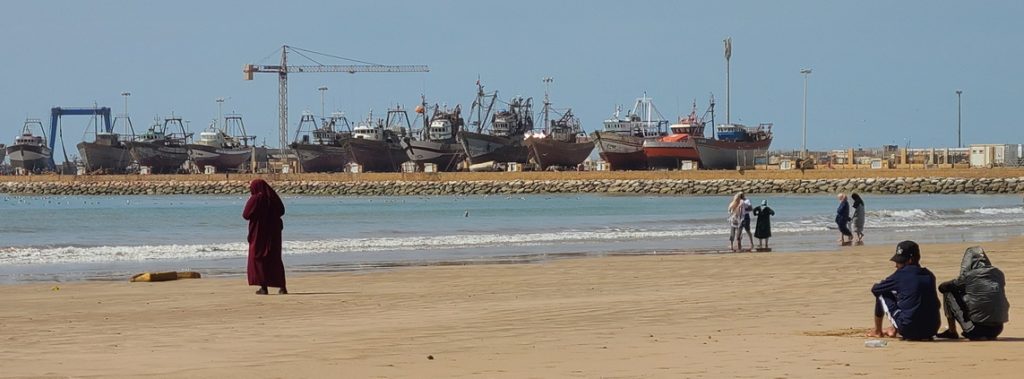
I’m going out of order here, because Essaouira, on the Atlantic coast, was another city where we saw many traces of the Jewish past. This city, which was known until the 1960s by its Portuguese name, Mogador, has been occupied since at least the 5th century BCE. One of its earliest exports was purple dye, made from the the murex and purpura shells nestled in the intertidal rocks. The dye was the color used by the Romans for the purple stripe in Senators’ togas.
Essaouira has a sheltered harbour, and was well placed for shipping and trading routes. As a result, it has a long history of different occupiers and of piracy. (You’ve heard of the pirates of the Barbary Coast? “Barbary” was a variant of the term Berber. Apparently the Romans referred to the Berbers as “barbarians”.)
Essaouira was controlled by the Portuguese in the 1500s. During the 1600s France, Spain, England and the Netherlands all tried to conquer it. Using the strategy of “my enemy’s enemy is my friend” it managed to defend its harbour from many invaders, and walking around the ramparts today you can still see the cannons.
(To see all photos in the galleries below, press the arrows on the sides of the pictures or the dots underneath.)
In the 18th century, Sultan Mohammed III turned Essaouira into an economic powerhouse. He invited Jews and come live and trade there, guaranteeing them his personal protection. He wanted to use their expertise to establish financial relationships with Christian countries. With their assistance, Essaouira (then known as Mogador) became the first port in Morocco to trade with the non-Muslim world. Under his leadership, in 1777 Morocco became the first nation to recognize the United States as an independent country. He encouraged foreign powers to set up consulates in the city. He eliminated personal and business taxes. As a result, the city entered its golden age and became the only one in the Muslim world with a majority Jewish population. In among the mosques of the medina were 37 synagogues. We visited two of them, and passed others.
From the 16,000 Jews who once lived in Essaouira, there are now only three Jews still living there. One of them is André Azoulay, who has served as a counsellor to two Moroccan kings. Determined to maintain Moroccan-Jewish friendship, he launched the Andalusian-Atlantic Festival, which happens in Essaouira every fall and sees hundreds of Jews travel to the city from all over the world to join Muslim Moroccans in celebrating their shared cultural heritage dating from Andalusian times. As described by The Economist,
“Locals pack the small stadium to watch Hebrew cantors and Koran-reciters sing arm-in-arm. Israelis and Palestinians flock there, too. “Essaouira is what the Middle East once was and might yet be again,” says Mr Azoulay.
https://www.economist.com/middle-east-and-africa/2017/11/02/moroccos-little-idyll-of-jewish-muslim-coexistence
As they say, from his lips to God’s ears!
We had another excellent tour guide in Essaouira. (One thing I will say for Intrepid Tours: the local guides they hired in each city were excellent. Except for the one in Marrakech, who didn’t show up and his/her replacement didn’t give us the full tour we’d paid extra for.)
Among other places, our guide took us to the fish port in time to watch the day’s first haul come in. We noticed several women in unusual head and face coverings going down to meet the fishermen as they came in. Our guide explained that “a respectable woman” wouldn’t want to be seen hanging out with sailors, thus the disguises. These were poor women who come each morning to collect charitable donations of fish from the day’s catch before any of it goes to the market. In their culture it would not be considered charity if the fishermen (or merchants) waited and only donated what they couldn’t sell.
She also explained that bread should never be thrown on the ground, because what may be trash to you is calories for someone who needs them. If a local sees bread on the ground they will put it up on a ledge so that a hungry person doesn’t have to eat from the ground.
The streets are so narrow that many men, young and old, work as porters. The one hired by our hotel to carry our bags out of the old town to our tour bus was so old and weak that our tour guide insisted on pushing the cart for him. It is sad to see people who live in such poverty that they have to keep struggling to do this hard labour in order to survive.
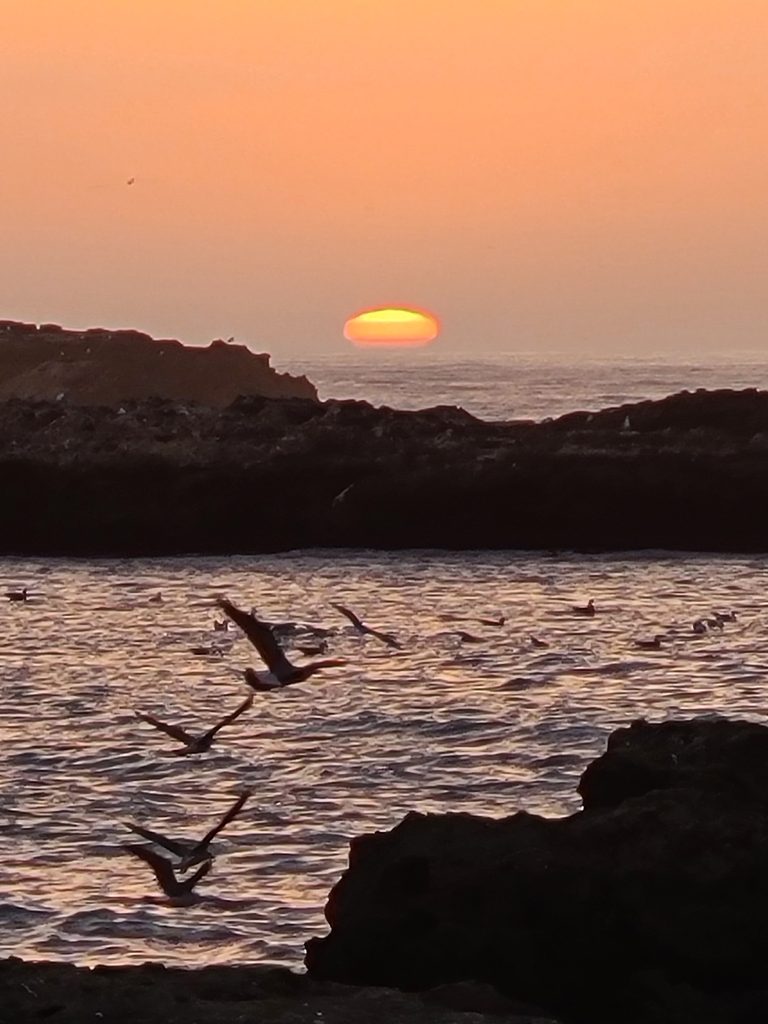
This is Part 2 of a series of posts on a trip to Morocco in October 2022. Click here to see Part 1. Part 3 is coming soon.
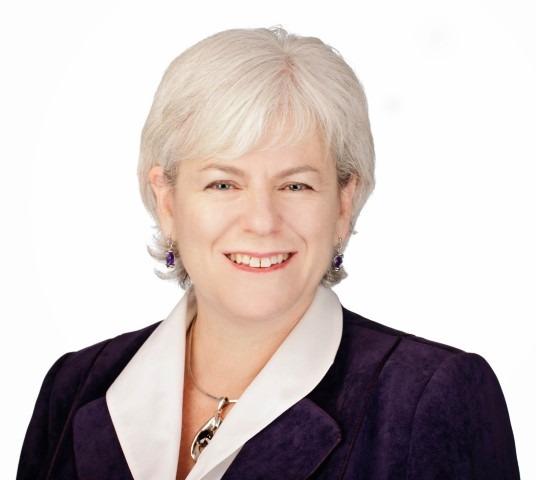
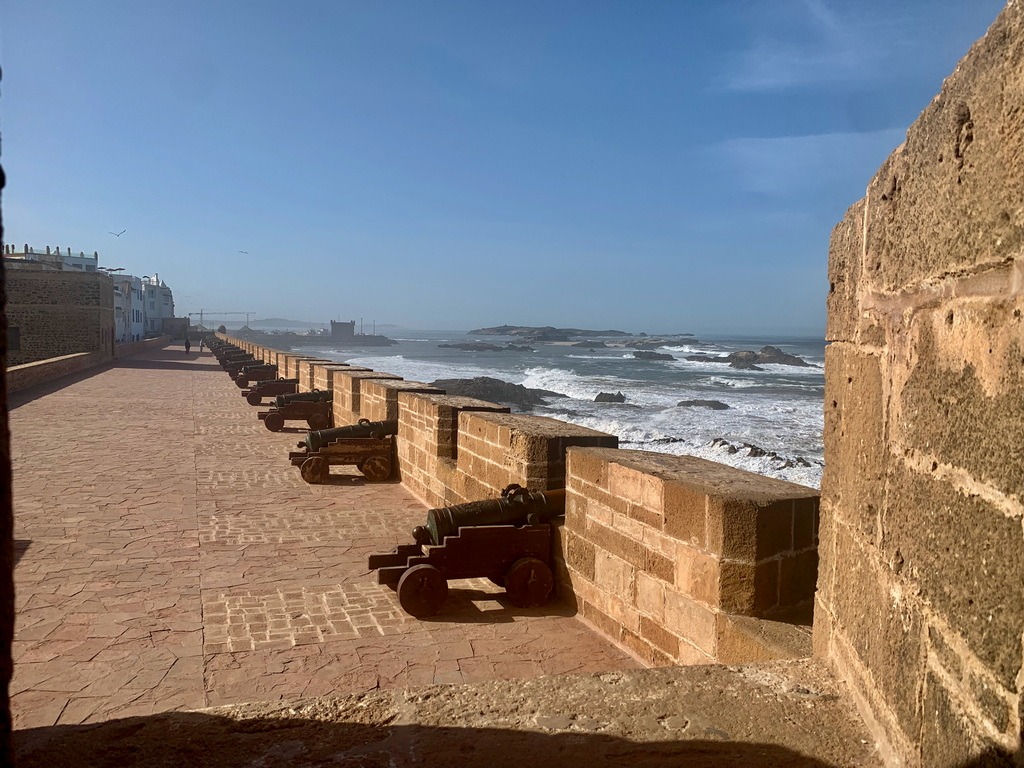
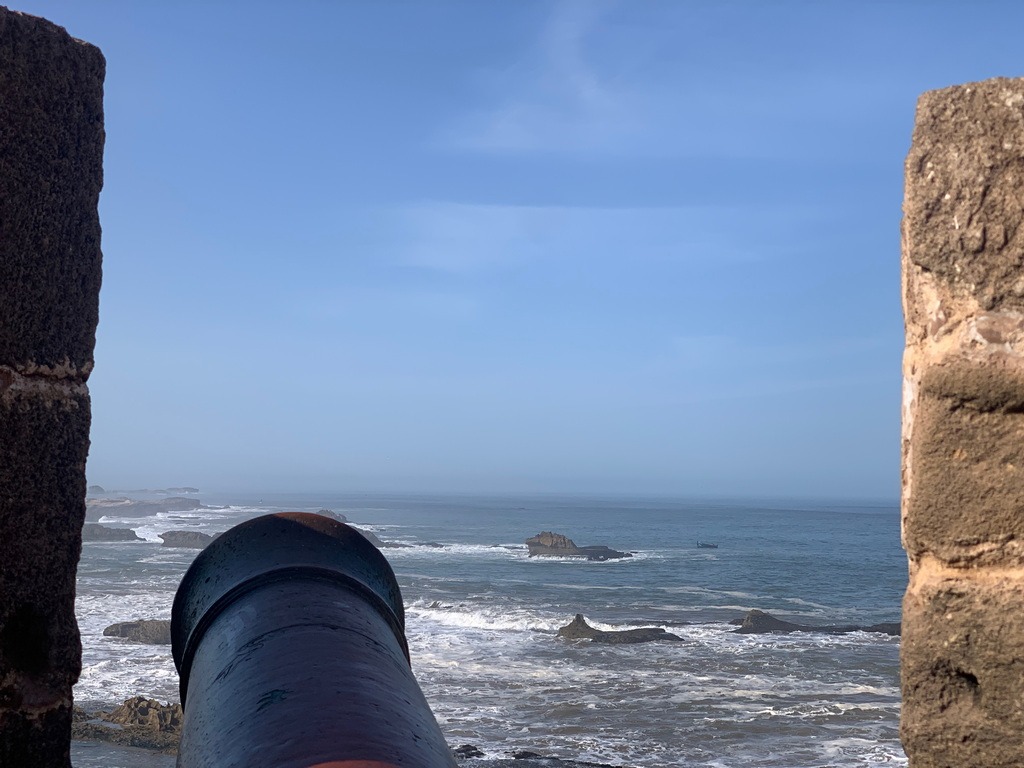
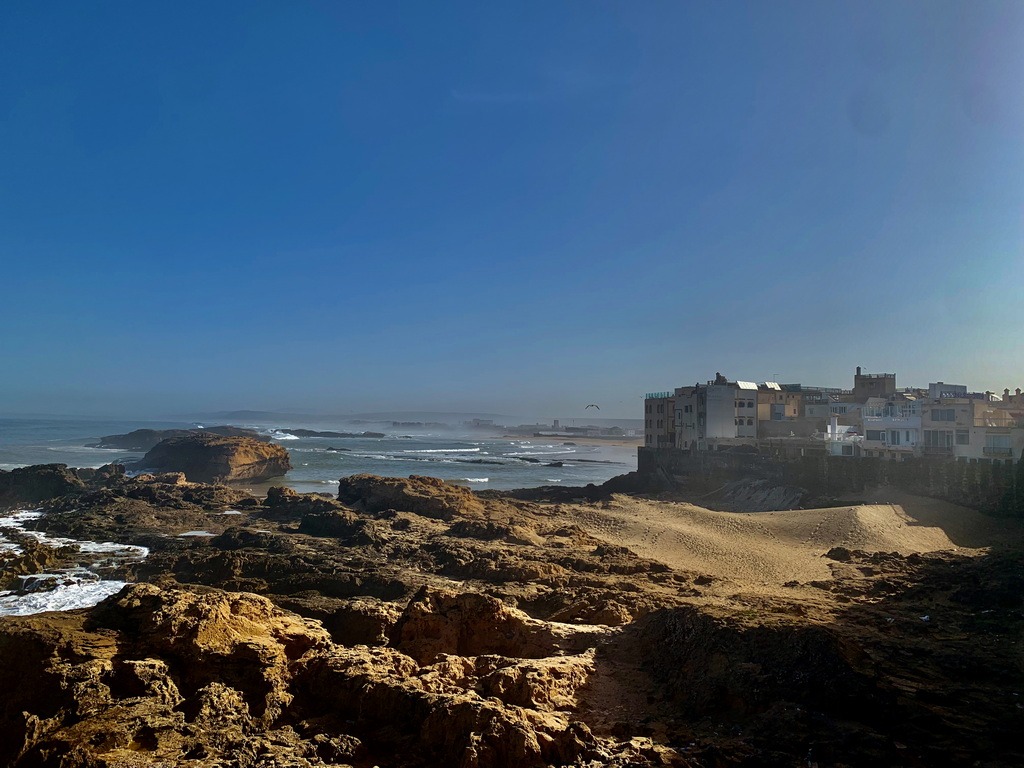
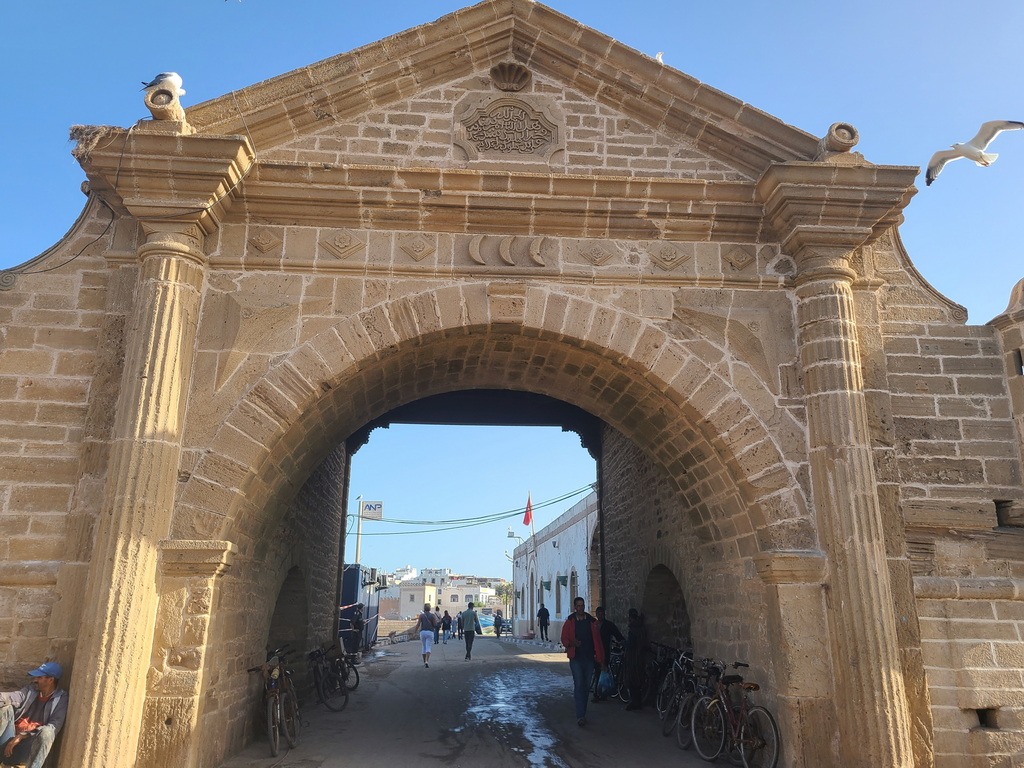
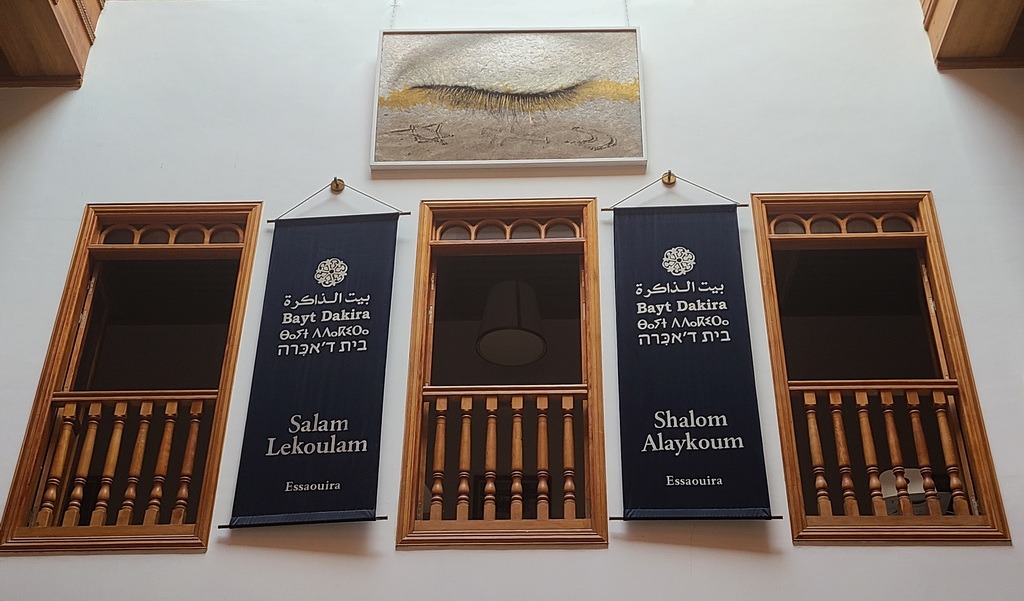
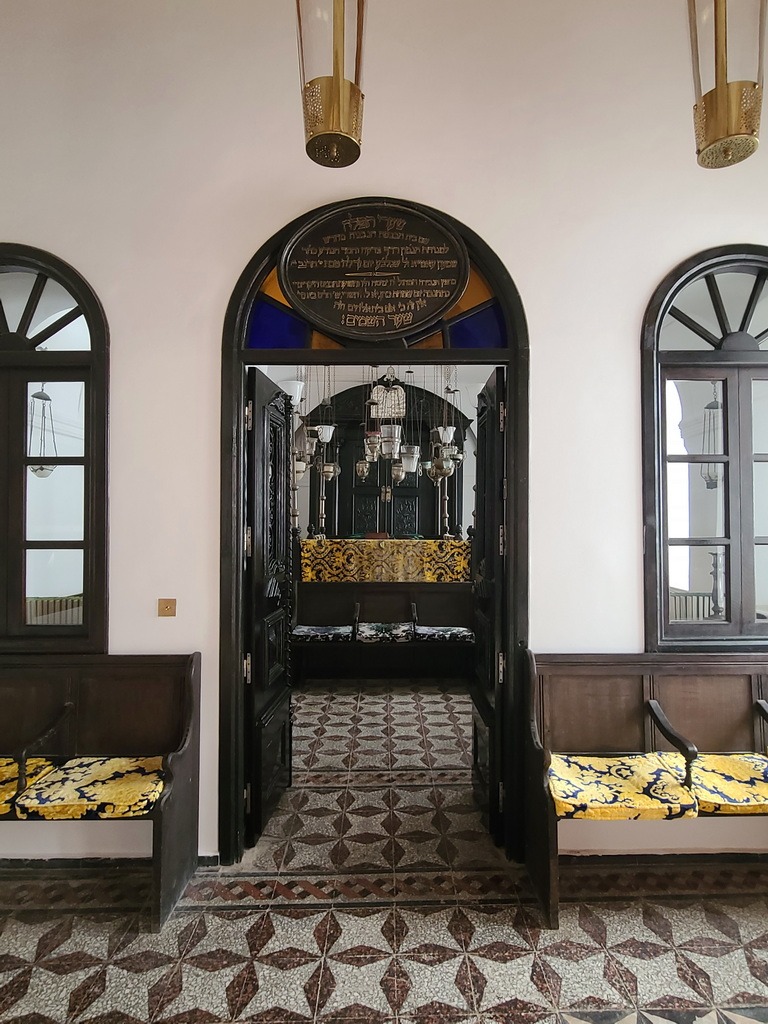
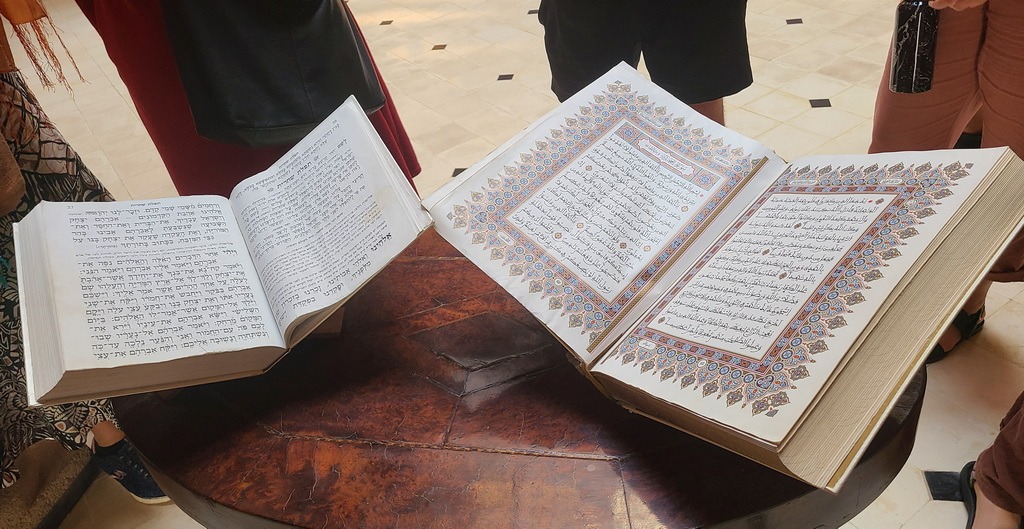
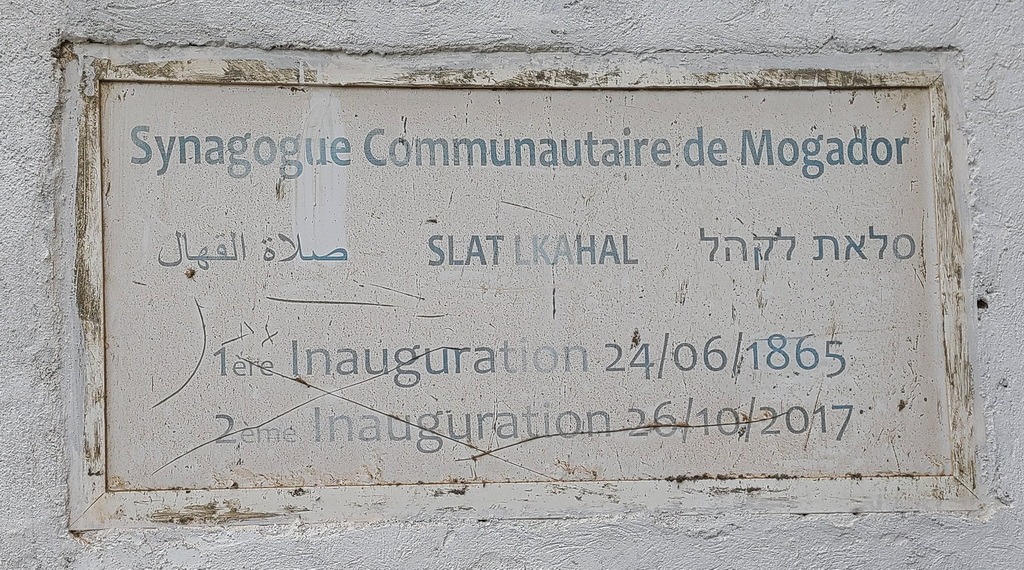
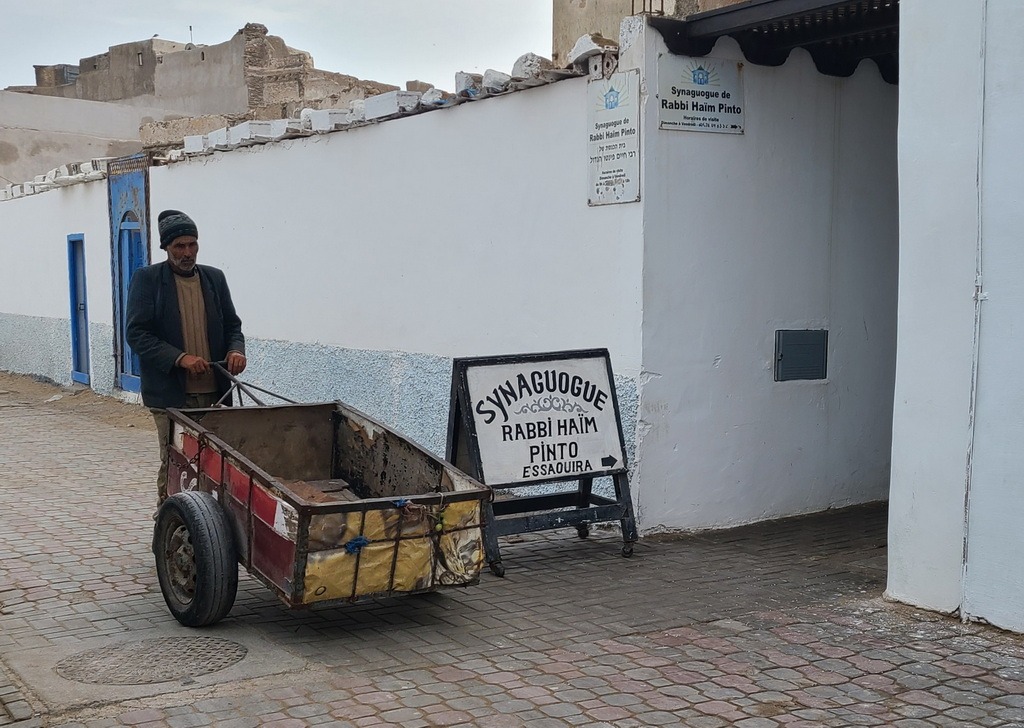

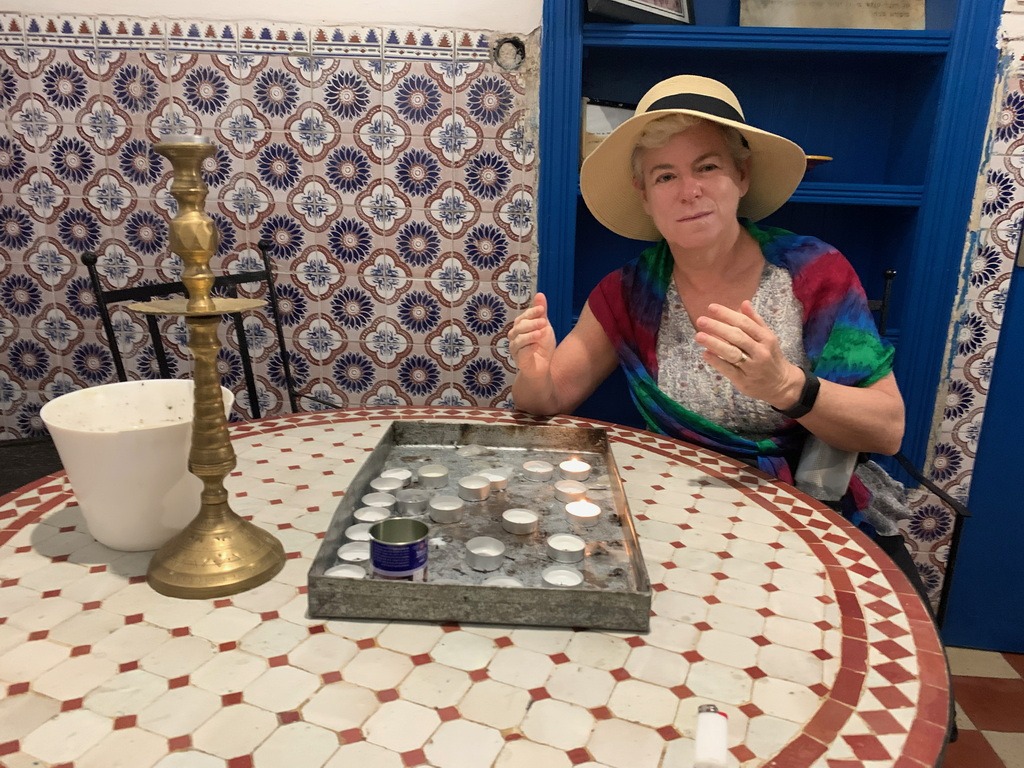


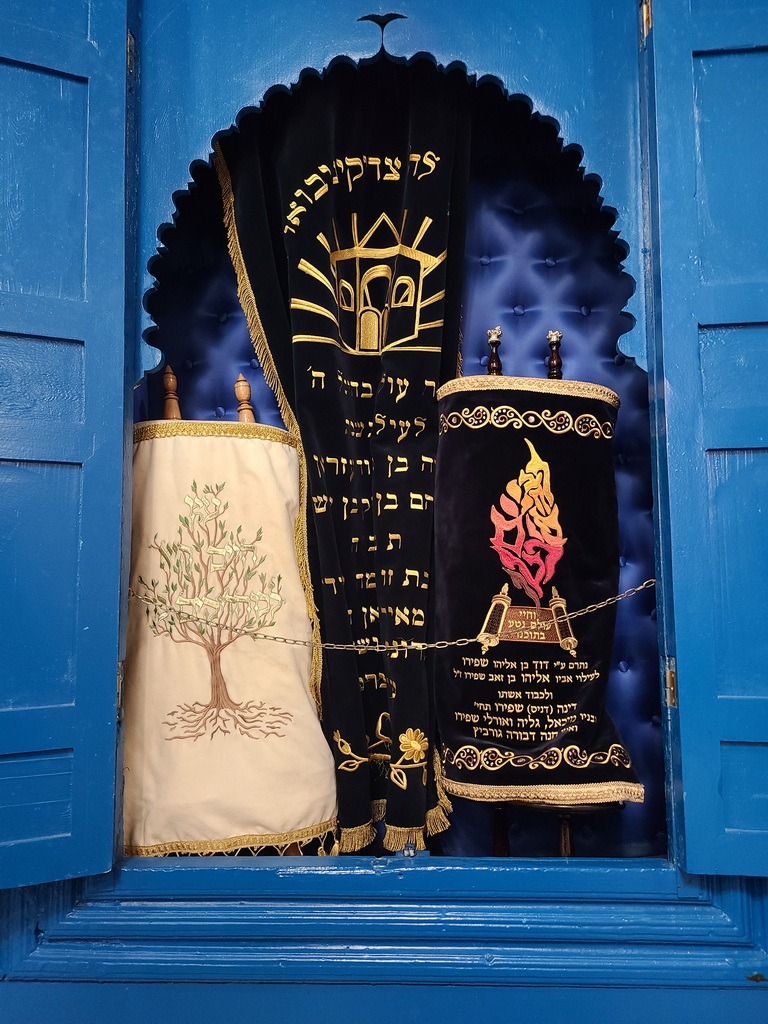
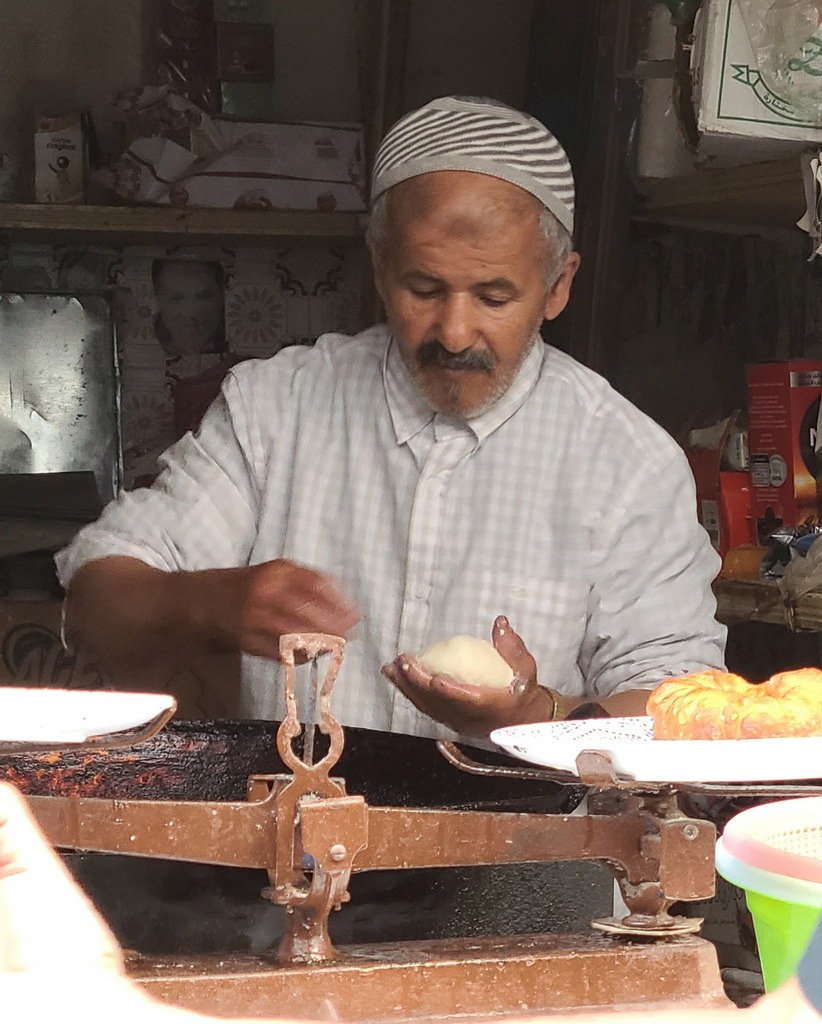
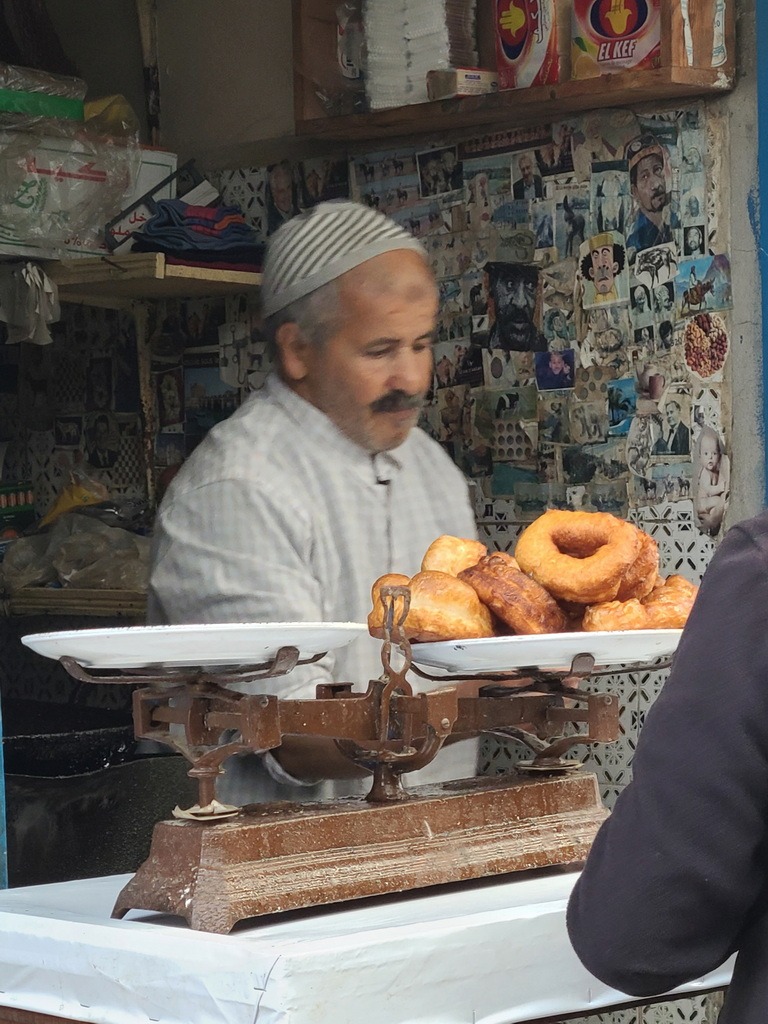

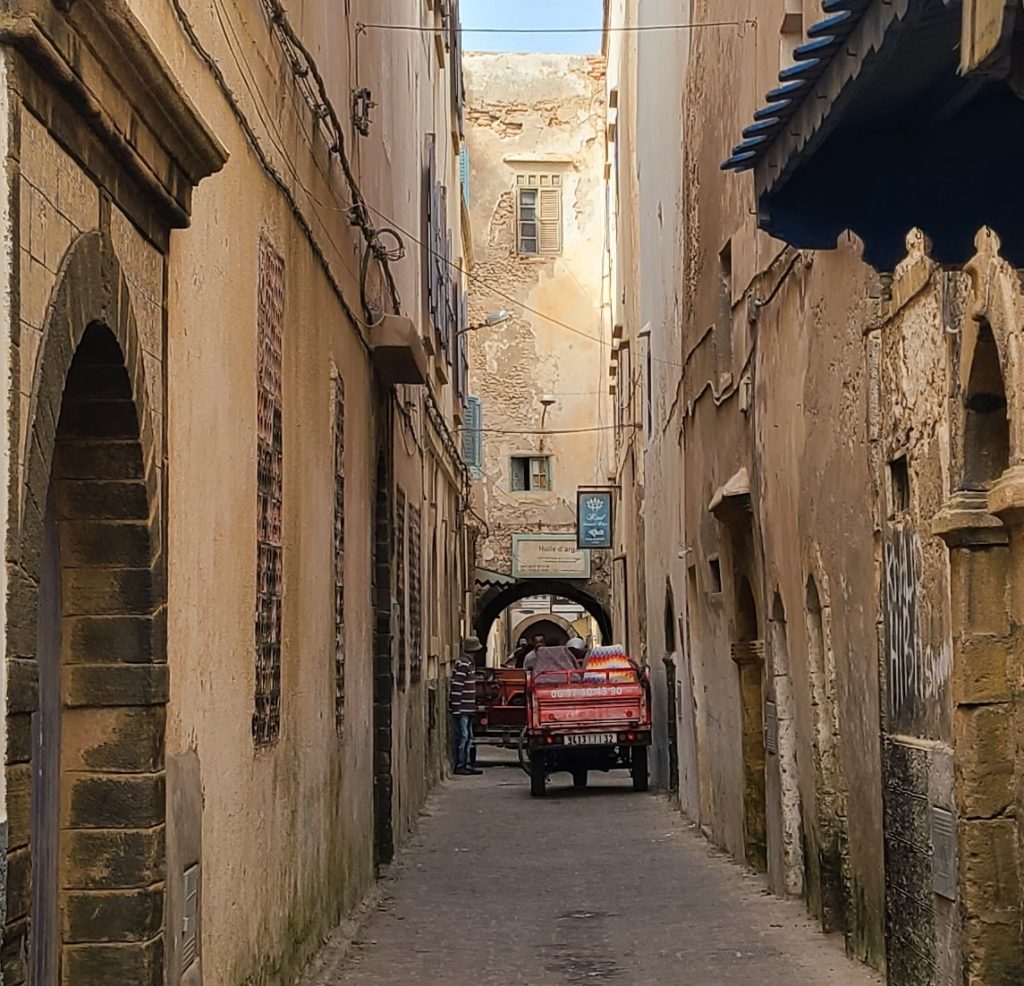
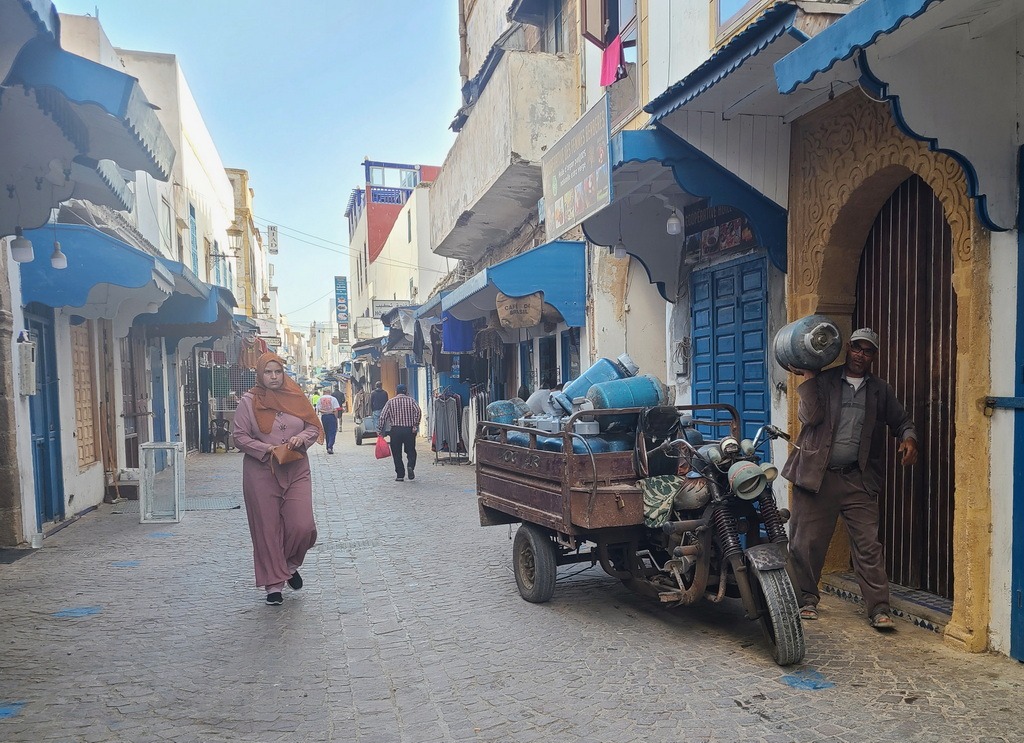


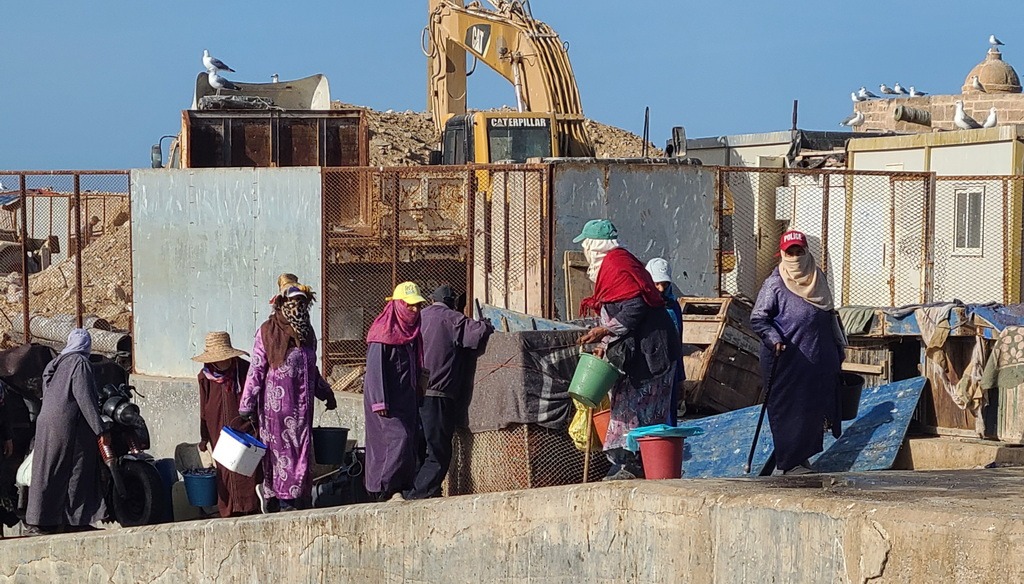
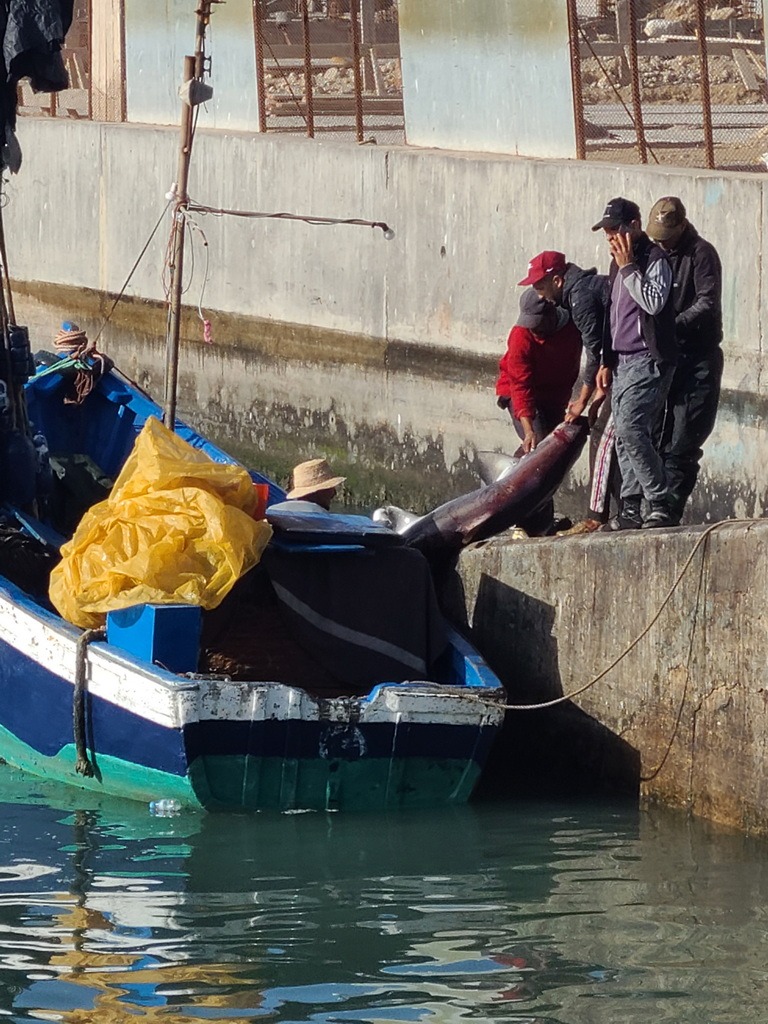
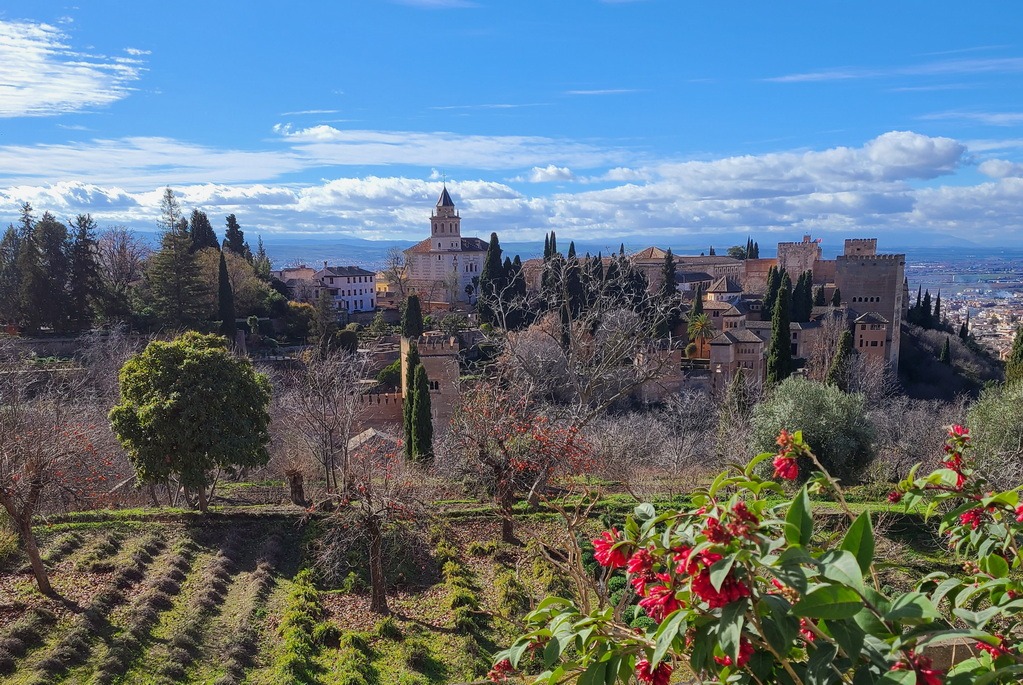
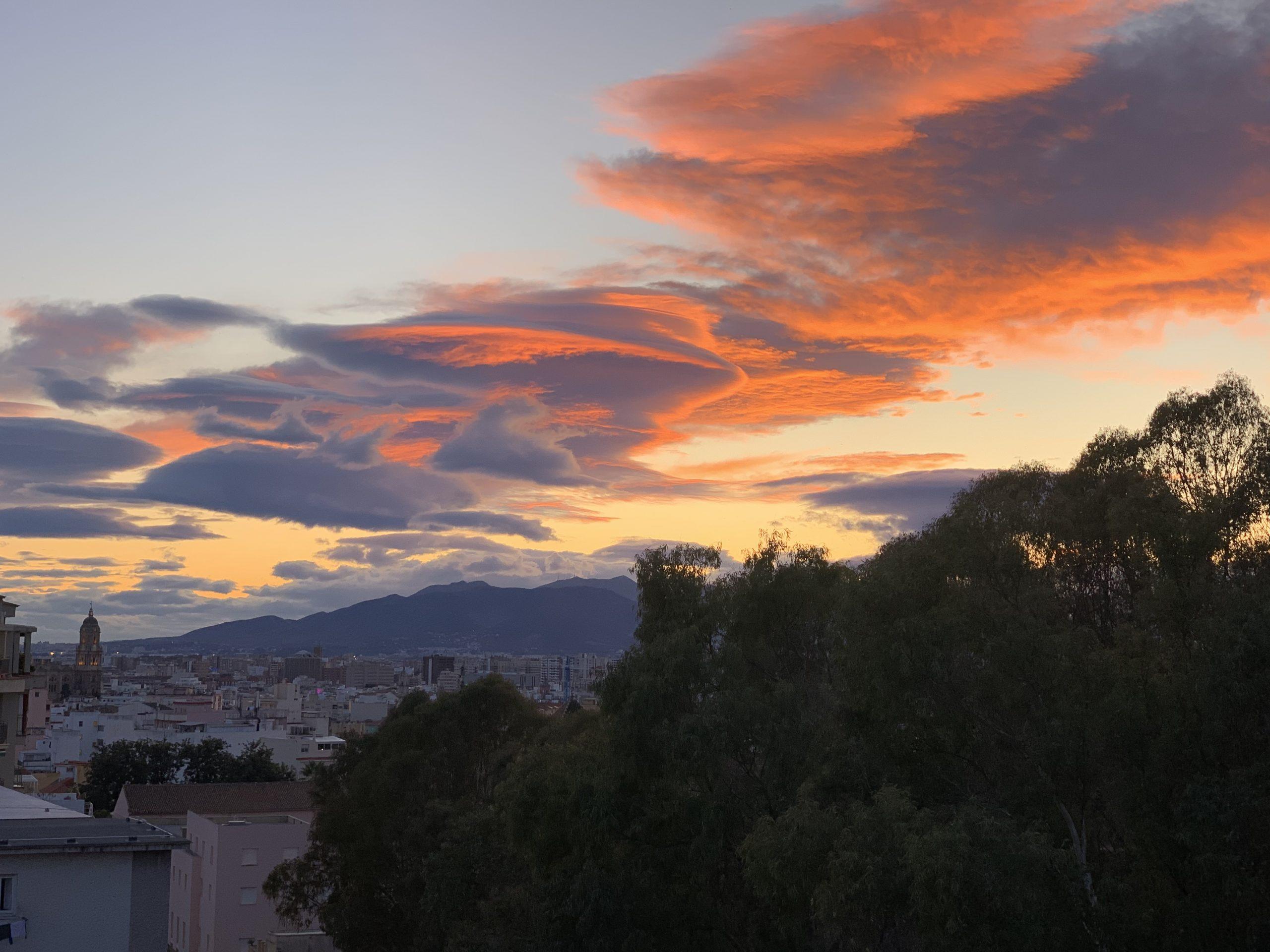
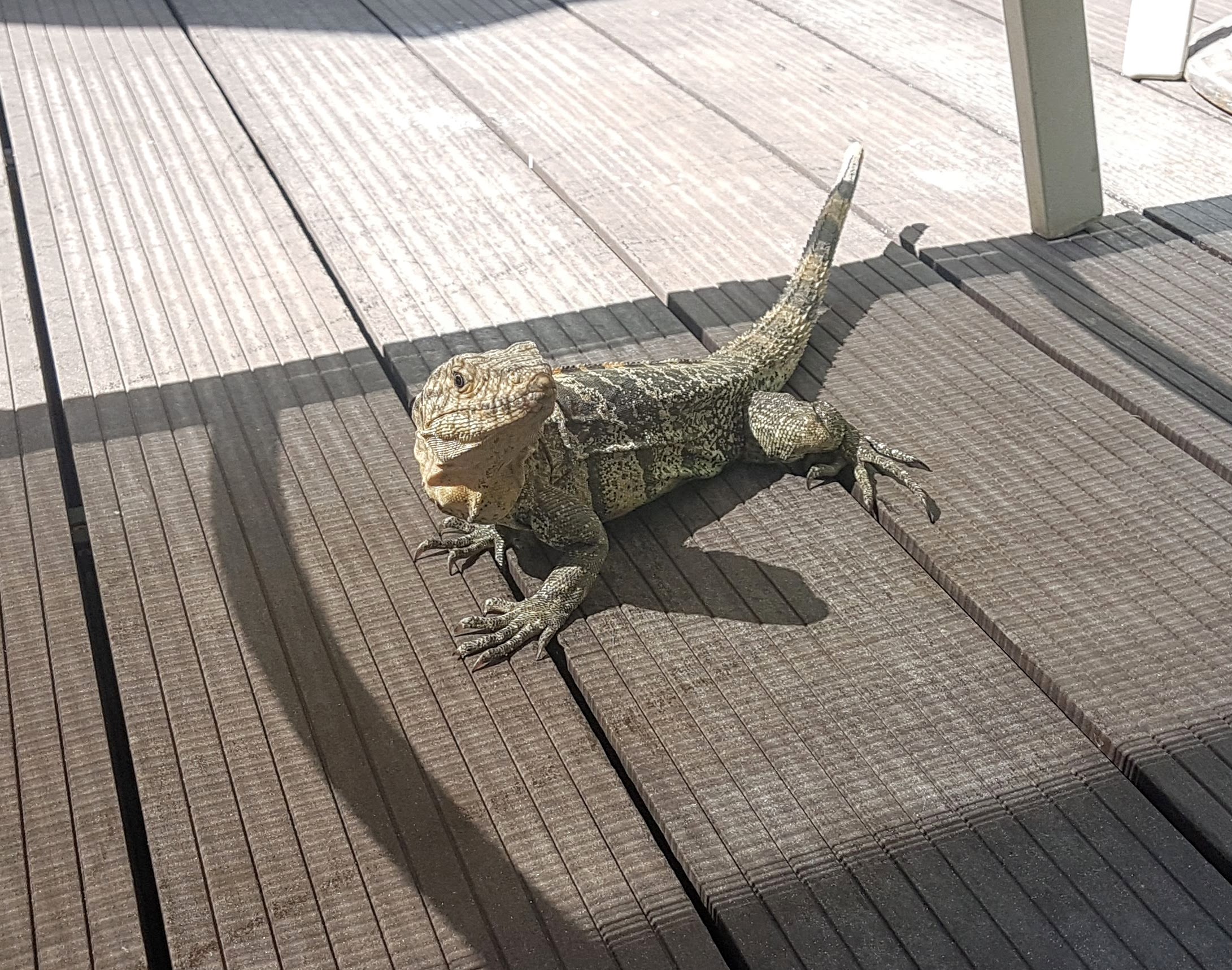

When I moved to Montreal, I found that many Jews mistakenly categorize Sephardic Jews as Moroccans. Many Jews from Morocco moved to the city in the Sixties when there was a change of regime; King Mohammad V died. Montreal was an attractive destination as the knowledge of French was an asset. At this time (2023), there are a number of Moroccan Jews who attend my Ashkenazi synagogue, perhaps an indication of the increasing integration of that population into Montreal’s Jewish community. Almost without exception, they speak fondly of Morocco. Recently one woman told me that she is looking to build a home in Morocco to return to over winter. Another woman several years ago told me, flat out, that she never understood why she left the country, but that everyone in her community was leaving at the time. To complete the circle, Ashkenazi neighbours of ours sent their son to Morocco last summer to study drumming technique. The young man, having acquired French proficiency in public school, fit right in and had a very positive experience. So the hype about good relations in the community seems to ring true, but people can emigrate for a better life even when their current status in a country is acceptable. Not everyone is interested in being a well-treated minority, a status that could change in the blink of a royal eye!
I enjoyed this installment as much as the first one! Looking forward to Part 3.
What are those birds in your last photo?
I’ve been fascinated by Moroccan culture since I was a young school girl reading National Geographics. Your adventures just confirm that they have an amazing history.
They certainly do. And so much potential too. It is sad that the income distribution is so skewed.